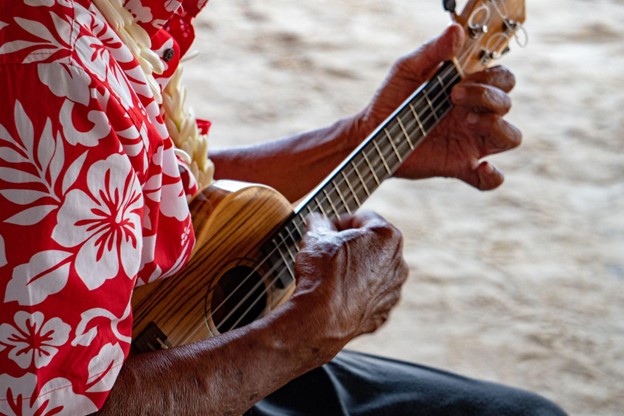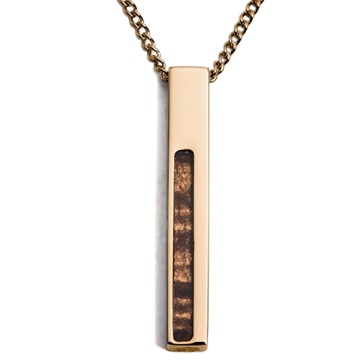Koa wood products swim in every Hawaiian jewelry store, art gallery, souvenir shop, and farmers market. Their colors range from yellow to gold to auburn to dark chocolate – depending on the age of the wood. Their patterns jump from “straight” – which is the most affordable, to “figured” to “curly” – which ripples like holographic tiger stripes.
Comparing two koa bowls can be confusing, as they appear so very opposite. But one thing is consistent about Hawaiian koa – the price. It’s lofty for wood. Is it worth it? In a nutshell, yes. Why? Mostly because it is so rare. While koa is part of the Acacia family, these trees only grow in Hawaii, and best on the Main Island.
History of Koa Wood
During the reign of King Kamehameha the Great, he and his fierce 18th-century warriors – called “koa” paddled and fought from island to island relying on their strongly built canoes and weapons to eventually unite the islands. The wood itself became synonymous with Kamehameha’s fighters and came to be called “koa”, meaning “warrior.”
Later, the king prohibited anyone but the Hawaiian monarchy and members of the royal class from possessing what was considered elite wood (even though it was plentiful during the 1700s). It wasn’t until his death that Kamehameha’s wife nullified his ruling making Koa wood available to all Hawaiians.
Why Koa Wood Is So Rare
While King Kamehameha was vital to the story of Koa Wood, he was also the antithesis of its future. In 1793, Captain George Vancouver presented the king with six cows and one bull. Kamehameha immediately cleared 400 acres for pasture and prohibited anyone from interfering with or killing the cattle. By the mid-1800s, upwards of 25,000 wild grazing cattle roamed the Koa forests.
Today, those offspring continue to graze on newly formed koa shoots. Other foragers, such as wild pigs especially love the young saplings and have been known to raze entire acres in one night. Impressive, stately Koa trees can take 50 years to grow. Smaller stickly growths take 15-25 years. Unfortunately, the rate of natural regeneration cannot keep up with the rate of grazing and clearing for more cattle.
Harvesting Koa wood on public lands is illegal – which is a good thing. However, private conservation areas and private stock are few. Most Hawaiian wood makers resource Koa wood responsibly which requires using only naturally fallen or dying trees. These are becoming harder and harder to find.
Sustainable Koa Wood Products
Koa wood jewelry makes a perfect souvenir to commemorate that once-in-a-lifetime snorkel trip or whale watch, but more than that, Koa wood makes perfect jewelry in itself because of its chatoyance – a characteristic usually reserved to describe gemstones. It’s the way light reflects off of a luster surface. The word “chatoyance” is a French derivative meaning, “to shine like a cat’s eye.” Appropriate for curly-grained “tiger” Koa wood.
A simple bar pendant, like Pono Woodwork’s aptly named piece called, “strength” reflects not only the luster of the wood but the luster of the wearer as well. Hawaiian Koa rings make resounding statements of might and rarity. Cuff bracelets range from dainty to masculine and can be worn alone or layered with other metals. Any piece of Koa jewelry shines unlike most woods and offers a deeper holographic layer, much more like a precious gem.
Koa Wood Ranch harvests only Big Island trees that have toppled in storms to create their handcrafted koa ukeleles that come in either a Concert series or a Tenor series. Custom inlays and soundhole shapes such as an island turtle (Hono), give each instrument a more Hawaiian aesthetic and connection.
Where To Buy Sustainable Koa Wood Products
Koa wood products are easy to find in any farmers market or art gallery throughout the Islands. Most souvenir shops stock Koa finds, and many artists sell both locally and online.
On the Big Island, check out KoaWood Ranch’s retail store in Kailua-Kona.
For a unique experience in Oahu, call ahead of time to Happy Laulea at Phone: 808-800-3533. While they are located in the Waikiki Business Plaza, they are not a storefront, but rather a factory/studio where they can help you choose and/or customize a one-of-a-kind piece.
In Kauai, stop along the east side at the Koa Store in Lihue where you can peruse their showroom and watch their woodworkers in action.
Pono Woodworks and Martin & MacArthur can both be found in several locations on the Big Island, Maui, Oahu, and Kauai. See their websites for store addresses.









